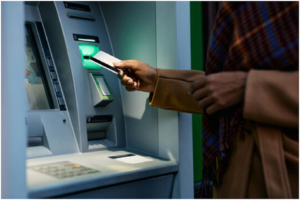
Track and Categorize Your Spending Using Savings Account Statements
In today’s fast-paced world, managing personal finances can be a challenging task. With so many expenses to keep track of, it’s easy to lose sight of where your money is going. However, by utilizing the statements provided by your savings account, you can gain valuable insights into your spending habits and take control of your finances. This article will provide you with a step-by-step guide on how to effectively track and categorize your spending using your savings account statements.
Understanding the Benefits of Using a Savings Account
Before diving into how to track and categorize your spending, let’s first understand the benefits of using a savings account. A savings account is a type of bank account that allows you to deposit money and earn interest on your balance. By using a savings account, you can easily track your income and expenses, as most banks provide detailed statements that show all transactions made using the account. This makes it an invaluable tool for managing your finances effectively.
Step 1: Review Your Savings Account Statements Regularly
The first step in tracking and categorizing your spending using your savings account statements is to review them regularly. Set aside some time each month to go through your statements and identify all transactions made during that period. By doing so, you can stay on top of your finances and ensure that you are aware of how your money is being spent.
Step 2: Categorize Your Expenses
Once you have reviewed your savings account statements, it’s time to categorize your expenses. Create a list of different expense categories such as groceries, utilities, entertainment, and transportation. As you go through your statements, assign each transaction to the appropriate category. This will help you visualize where your money is going and identify areas where you may be overspending.
Step 3: Use Digital Tools to Simplify the Process
Managing your finances manually can be time-consuming and prone to errors. To simplify the process of tracking and categorizing your spending, consider using digital tools such as budgeting apps or financial management software. These tools can automatically categorize your expenses, generate detailed reports, and provide insights into your spending habits. By leveraging technology, you can streamline the process and gain better control over your finances.
Step 4: Set Financial Goals
Tracking and categorizing your spending can only take you so far if you don’t have clear financial goals in mind. Take some time to reflect on your financial objectives, whether it’s saving for a vacation, buying a home, or building an emergency fund. By setting specific goals, you can stay motivated and disciplined in managing your finances. Use your savings account statements to monitor your progress towards your goals and make adjustments as needed.
Step 5: Monitor Your Progress Regularly
Finally, it’s crucial to monitor your progress regularly. Make it a habit to review your savings account statements at the end of each month and compare your actual spending against your budget. Identify any areas where you may have overspent and look for ways to cut back on unnecessary expenses. By staying vigilant and proactive, you can stay on track towards achieving your financial goals.
In conclusion, tracking and categorizing your spending using your savings account statements can be a powerful tool for managing your finances effectively. By following the steps outlined in this article, you can gain valuable insights into your spending habits, set clear financial goals, and stay on track towards achieving financial success. Remember, consistency is key, so make it a habit to review your savings account statements regularly and make adjustments as needed. With dedication and discipline, you can take control of your finances and secure a bright financial future.


